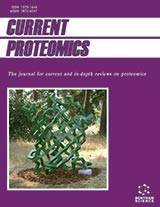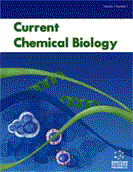Abstract
The specificity of drug targets is a great challenge in the pharma-proteomics field of cancer biology. In particular, bioinformatics methods based on complex networks and Gene Ontologies (GOs) are very useful in this area. This work reviews some bioinformatics concepts and previous studies related to Colorectal Cancer (CRC) research using GOs, complex networks, and related methods. Also, we report new results mapping natural compounds on potential drug target CRC network using GOs. The literature mining along with OMIM database gives the details of diseased genes which are further subjected to design a well connected gene regulatory network for cancer. The resultant network is then extrapolated to proteomics level to sort out the genes only expressed in the specific cancer types. The network is statistically analyzed and represented by the graphical interpretation to encounter the hub nodes and their locally parsed neighbors, ligands multi-receptor docking, and the propensity of drug targets in hub nodes and related sub-networks.
Keywords: Chemo preventive drugs, systems biology, mapping, colon cancer, gene ontology, Open Biomedical Ontologies, Colorectal Cancer, Kyoto Encyclopedia of Genes and Genomes, Unified Medical Language System, National Center for Biomedical Ontology
Current Bioinformatics
Title: Complex Network and Gene Ontology in Pharmacology Approaches:Mapping Natural Compounds on Potential Drug Target Colon Cancer Network
Volume: 6 Issue: 1
Author(s): Biplab Bhattacharjee, R. M. Jayadeepa, Usha Talambedu, Sanghita Banerjee, Jayadev Joshi, Jilu Princy Mole, Joshua Samuel and Sushil Kumar Middha
Affiliation:
Keywords: Chemo preventive drugs, systems biology, mapping, colon cancer, gene ontology, Open Biomedical Ontologies, Colorectal Cancer, Kyoto Encyclopedia of Genes and Genomes, Unified Medical Language System, National Center for Biomedical Ontology
Abstract: The specificity of drug targets is a great challenge in the pharma-proteomics field of cancer biology. In particular, bioinformatics methods based on complex networks and Gene Ontologies (GOs) are very useful in this area. This work reviews some bioinformatics concepts and previous studies related to Colorectal Cancer (CRC) research using GOs, complex networks, and related methods. Also, we report new results mapping natural compounds on potential drug target CRC network using GOs. The literature mining along with OMIM database gives the details of diseased genes which are further subjected to design a well connected gene regulatory network for cancer. The resultant network is then extrapolated to proteomics level to sort out the genes only expressed in the specific cancer types. The network is statistically analyzed and represented by the graphical interpretation to encounter the hub nodes and their locally parsed neighbors, ligands multi-receptor docking, and the propensity of drug targets in hub nodes and related sub-networks.
Export Options
About this article
Cite this article as:
Bhattacharjee Biplab, M. Jayadeepa R., Talambedu Usha, Banerjee Sanghita, Joshi Jayadev, Princy Mole Jilu, Samuel Joshua and Kumar Middha Sushil, Complex Network and Gene Ontology in Pharmacology Approaches:Mapping Natural Compounds on Potential Drug Target Colon Cancer Network, Current Bioinformatics 2011; 6 (1) . https://dx.doi.org/10.2174/157489311795222400
| DOI https://dx.doi.org/10.2174/157489311795222400 |
Print ISSN 1574-8936 |
| Publisher Name Bentham Science Publisher |
Online ISSN 2212-392X |
 19
19
- Author Guidelines
- Bentham Author Support Services (BASS)
- Graphical Abstracts
- Fabricating and Stating False Information
- Research Misconduct
- Post Publication Discussions and Corrections
- Publishing Ethics and Rectitude
- Increase Visibility of Your Article
- Archiving Policies
- Peer Review Workflow
- Order Your Article Before Print
- Promote Your Article
- Manuscript Transfer Facility
- Editorial Policies
- Allegations from Whistleblowers
Related Articles
-
Lipid Oxidation Products in the Pathogenesis of Inflammation-related Gut Diseases
Current Medicinal Chemistry Modulation of ABC Transporters by Nuclear Receptors: Physiological, Pathological and Pharmacological Aspects
Current Medicinal Chemistry Cellular Relationships of Testicular Germ Cell Tumors Determined by Partial Canonical Correlation Analysis of Gene Expression Signatures
Current Bioinformatics Identification of Novel Drug Targets for Angiostatic Cancer Therapy; It Takes Two to Tango
Current Pharmaceutical Design Irreversible Multitargeted ErbB Family Inhibitors for Therapy of Lung and Breast Cancer
Current Cancer Drug Targets Pleiotropic Effects of Tocotrienols and Quercetin on Cellular Senescence: Introducing the Perspective of Senolytic Effects of Phytochemicals
Current Drug Targets FK506 Binding Proteins as Targets in Anticancer Therapy
Anti-Cancer Agents in Medicinal Chemistry Application of Microdialysis in Clinical Pharmacology
Current Clinical Pharmacology Effect of Hyperthermia and Triblock Copolymeric Nanoparticles as Quercetin Carrier on DU145 Prostate Cancer Cells
Current Nanoscience When Neighbors Talk: Colon Cancer Cell Invasion and Tumor Microenvironment Myofibroblasts
Current Drug Targets Development of Curcumin-Loaded Solid Lipid Nanoparticles Utilizing Glyceryl Monostearate as Single Lipid Using QbD Approach: Characterization and Evaluation of Anticancer Activity Against Human Breast Cancer Cell Line
Current Drug Delivery Druggability of Mortalin for Cancer and Neuro-Degenerative Disorders
Current Pharmaceutical Design Entropy Model for Multiplex Drug-Target Interaction Endpoints of Drug Immunotoxicity
Current Topics in Medicinal Chemistry Sirtuin Inhibitors: An Overview from Medicinal Chemistry Perspective
Anti-Cancer Agents in Medicinal Chemistry Interactions of Cisplatin with non-DNA Targets and their Influence on Anticancer Activity and Drug Toxicity: The Complex World of the Platinum Complex
Current Cancer Drug Targets Structure and Mechanism of Arylamine N-Acetyltransferases
Current Topics in Medicinal Chemistry Current Drug Targets for Thymic Neoplasms
Current Cancer Drug Targets Non-Replicating Viral Vector-Based AIDS Vaccines: Interplay Between Viral Vectors and the Immune System
Current HIV Research Multiple-Target Drugs: Inhibitors of Heat Shock Protein 90 and of Histone Deacetylase
Current Drug Targets K-Ras, Intestinal Homeostasis and Colon Cancer
Current Clinical Pharmacology

















.jpeg)








